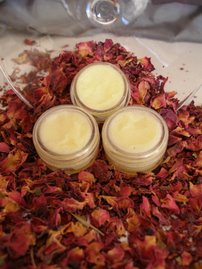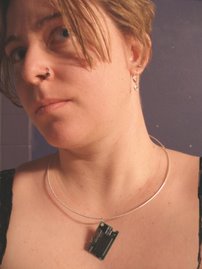In my first part, I described the history of soap and some of the processes by which soap is made. In this second part, I will go into further details in the soap making process by explaining three (3) different types of soap making processes: cold process, hot process and “melt and pour” (commonly called glycerin soap).
Cold process and hot process are both traditional ways of making soap. These two types of soap making are very similar in how the ingredients are used and mixed, but the curing process is much different. Both of these types of soap making would be recognizable to people from the past as they have changed little.
To begin, you need to choose your fats. These days, most fats are from some form of plant oils, such as olive, soybean or coconut oils. Each kind of fat has a “saponifiable rating” -- how much of the fat will turn to soap in the process. Some oils have what are called “unsaponifiables” – some parts of that fat will not change to soap in the process. You would typically use oils with unsaponifiables to superfat the recipe. Superfatting, as you will recall from my prior article, means that these oils will stay behind to moisturize the skin. Most soap makers work between 5%-10% superfatting when making modern soap.
After you have designed the oil balance of your soap, to create the desired, hardness, conditioning, foaming and more, a calculator is used to determine the amount of Lye needed for the mixture. Again soap makers work from either a mixture of 100% soap (a even balance of fats to lye) or a superfatted soap that would put the soap as lower then 100% to the fats, to add to the moisturizing properties of the soap.
A liquid is added to help start the processing of the lye and this liquid can be just about anything. Some liquids require extra preparation before being ready to use, such as alcohols (wine and beer, etc.). Most commonly used liquids are water, tea, or various milk products.
After the ingredients are gathered, they are mixed together. At this point, cold and hot processing begin to diverge. Lye, when mixed with liquid, produces a large amount of heat. In hot process, the soap maker mixes and works with the lye in this superhot state and cold process makers let the mixture sit out and cool to a more reasonable temperature. The mixture is blended by hand (or with a stick blender) until it reaches a stage called “trace”. This is the point in the process when the lye and fats start to change into soap.
A hot process maker puts the mixture into the oven to begin the curing process. Curing in an oven (which is why it is known as hot process) can be finished in as little as 45 minutes. The soap can be heated in the mold or placed in molds after the process is finished. Typically scents and additives are added as the soap is molded. The great part of Hot Process soap is that it is ready to us as soon as it is removed from the oven, it also typically requires less fragrance then cold process, but is not usually as “pretty” as cold process soaps. Crock Pot soap making is done in a very similar manner.
Once the trace stage happens for a cold process maker, the mixture is placed into the molds directly. This is when cold process makers add their additives and fragrances (and many soap makers also like to add color additives and do a process called swirling that leaves colored streaks throughout the soap). The soap is left to process in the covered mold for several weeks. The hot process uses heat to accelerate the curing process – the cold process maker lets the natural heat build over time to finish the curing process. During this stage for cold makers, the soap is not safe to handle without protection. Once it is done curing, the soap is safe and ready to cut and use. Cold Process is tough for those who are impatient as it takes time to have a finished product, but when finished it is a very attractive, well scented, bar of homemade soap.
Melt and Pour also know as Glycerin soap is a completely different process than hot and cold process. It is typically done to create a certain look, quickly and easily. It is called melt and pour because the soap is designed to be heated and poured into molds after any additives, colors, and fragrances are added to the base.
It is called Glycerin soap since the most common additive is Glycerin, which helps to add to the texture, melt-ability and to help add conditioning properties to the soap base. An interesting fact is that most mass-produced soaps have their natural glycerin squeezed out of it and then the large soap makers sell the resulting glycerin to make melt and pour soap.
The base typically is a mixture of soap, most common Coconut oil or Palm Oil which are known for their hardness and nice lather they add to a bar of soap. In some bases additives are added such as Glycerin, Sodium Stearate, Sorbitol, Propylene Glycol, Sodium Laureth Sulphate (SLES), Stearic Acid, Lauric Acid, and Sodium Chloride most of these ingredients are added to preserve, add longer lasting lather, to make the soap clear and to help it re-melt in the beautiful way only melt and pour can. These ingredients vary depending on who makes the base.
Some bases are also called detergent bars as they contain no “soap”, instead detergents such as Sodium Laureth Sulphate (SLES), are mixed with other ingredients for a product that works just like soap but contains no naturally occurring Glycerin, just the Glycerin typically added to the base.
How to tell if the base you are using is “soap” or “detergent” is simple -- look for the word saponificated oils, the saponified names of oils such as Sodium Palmate (Palm Oil), Sodium Cocoate (coconut oil) or Sodium Tallowate (Tallow or Animal Fat) and or sodium hydroxide/potassium hydroxide. If you see any of these terms you are using a soap based product. If you do not, it is a detergent bar.
Melt and Pour has become very popular recently as it is very simple to work with and so attractive to use. Unlike standard soaps, it is easy to create very bright colors, wild designs and to imbed items such as ducks, balls, toys and more, since you can see through the soaps. This makes it a fun soap for kids. The downside is some blends can be very harsh to dry skin and people with some skin conditions, users should research the ingredients in each bar to make sure they will work for you, each blend is different so not all work for everyone and this type of soap dissolves much faster then Hot or Cold Processed soaps.
Thursday, March 29, 2007
Subscribe to:
Post Comments (Atom)








2 comments:
Wow. Soap seems like such a simple thing, but I guess there's a lot more than meets the eye! Very interesting. Thanks!
Great blog and a wonderful explanation of the soap making process.
I really miss making CP soaps; I just don't have the time/space anymore. : (
Luckily I was able to find a M&P soap base that is all-natural and chemical free. They're not easy to find!
Keep making your beautiful soaps and I look forward to seeing you around etsy!
Post a Comment